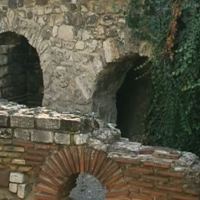The Belogradchik Fortress is located near the northwestern Bulgarian town of Belogradchik within the Belogradchik Rocks, a group of beautiful rock formations in various shapes and sizes. One of Bulgaria’s most famous natural landmarks spanning, they span over an area that is 30 km long and 15 km wide.
The Belogradchik Fortress is also known as the Belogradchik Kale. (“Kale” is a Turkish word meaning “fortress” left over from the Ottoman period commonly used for the numerous ruins of ancient and medieval fortresses all over Bulgaria whose proper names are sometimes unknown.) Before the 19th century, it was also called “Belgrade”, a common name for cities and strongholds in the medieval Bulgarian Empire which is mostly known today as the name of the Serbian capital.
The Belogradchik Fortress is one of the best preserved ancient and medieval fortresses in Bulgaria even when keeping in mind that it was substantially modified by the Ottoman Turkish authorities in the 19th century.
While the bulk of the some 6,000 fortresses, cities, and monasteries that existed in medieval Bulgaria were destroyed by the Ottoman invaders, the Belogradchik Fortress was actually rebuilt by them and utilized as a military outpost in the often unruly frontier province of the Vidin region in today’s Northwest Bulgaria.
The fortress was first built by the Ancient Romans in the 3rd century AD as an outpost that was part of a communication network controlling the road from the Roman colony of Ratiaria (Colonia Ulpia Traiana Ratiaria), whose ruins are located near today’s Bulgarian town of Archar on the Danube River, to the interior of the Balkan provinces.











